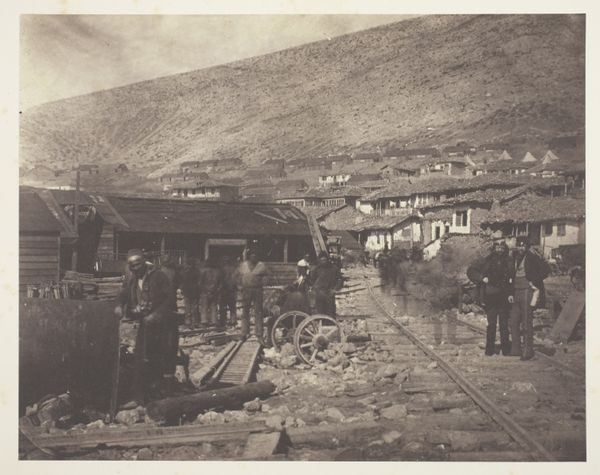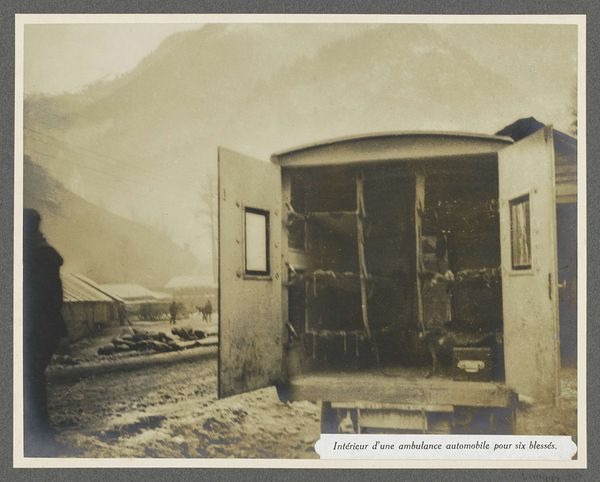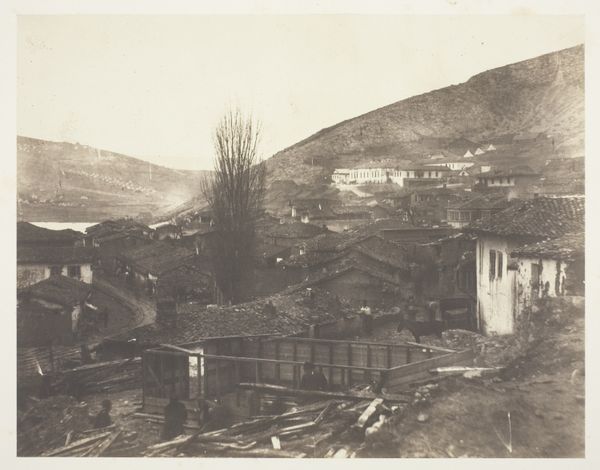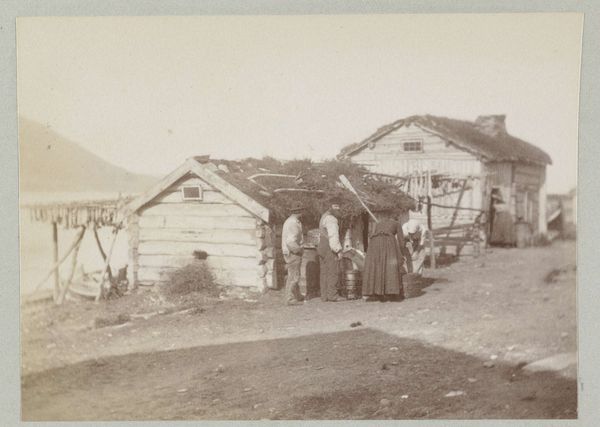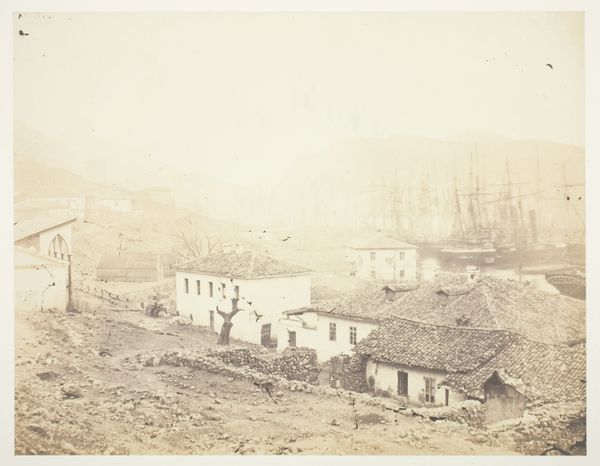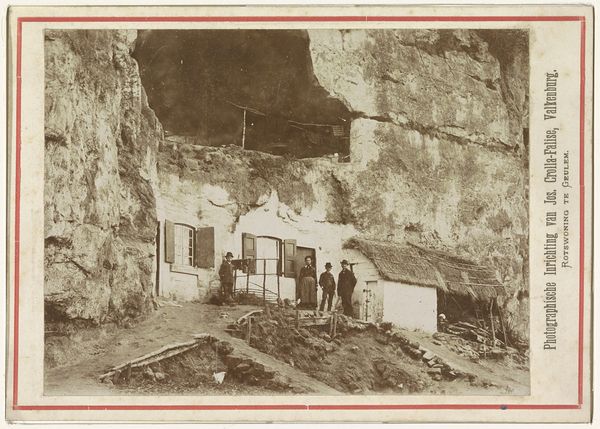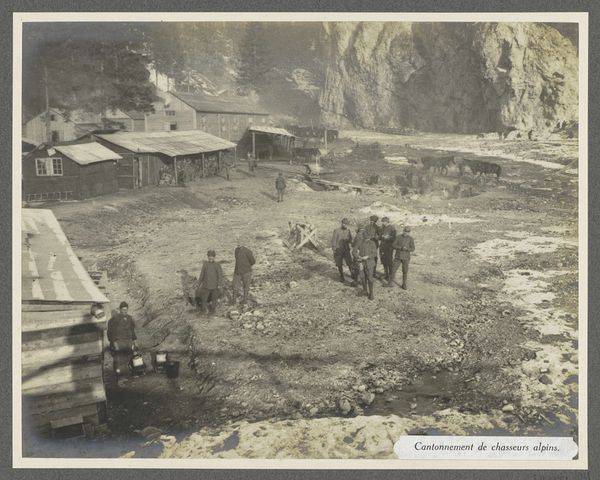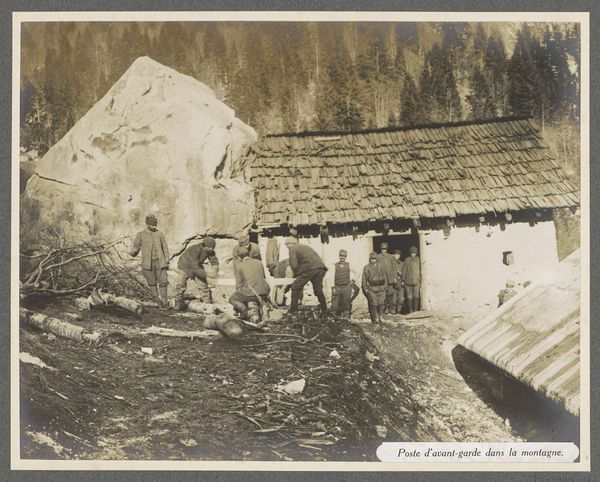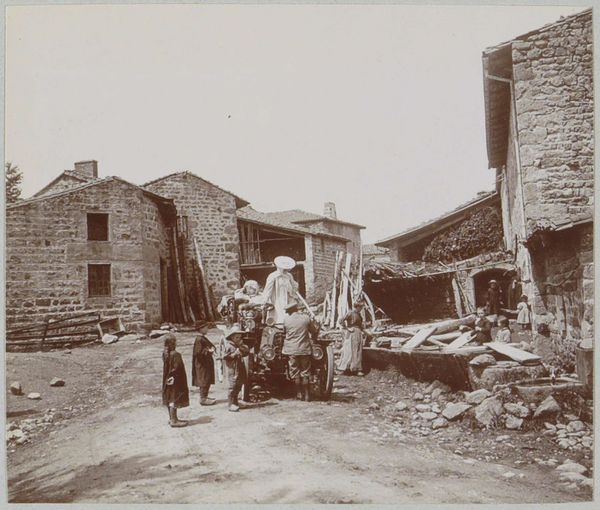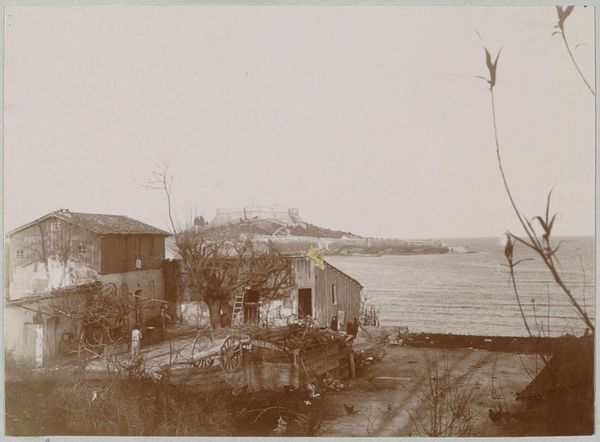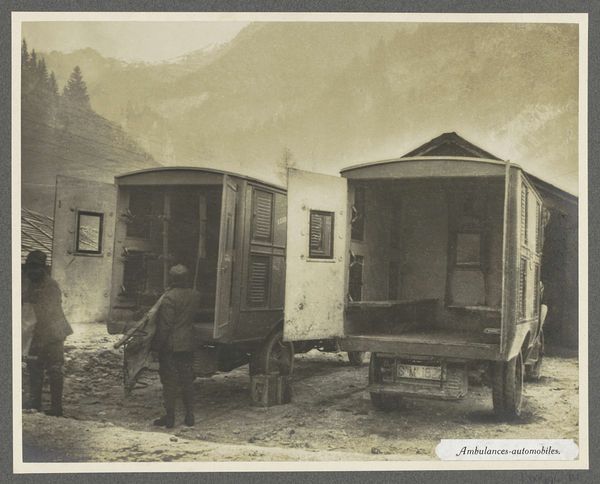
print, paper, photography, gelatin-silver-print
#
print photography
# print
#
war
#
landscape
#
paper
#
photography
#
gelatin-silver-print
#
history-painting
Dimensions: 19.1 × 25.1 cm (image/paper); 42.5 × 58.9 cm (mount)
Copyright: Public Domain
Curator: Here we have Roger Fenton's 1855 gelatin-silver print, "The Old Post Office, Balaklava," currently residing at The Art Institute of Chicago. Editor: My immediate reaction is one of somber observation; there's a stillness despite the obvious damage to the building. The sepia tones give it a feeling of a memory, a snapshot of a world left behind, almost as if suspended in time. Curator: Indeed. It’s fascinating to consider the materiality of this print as a relic of the Crimean War. Look closely at the ruined building – the collapsed roof, the visible infrastructure of its construction, the damaged timbers. It reminds us of the brutal realities and the human cost involved in the conflict. Editor: Absolutely. And beyond just ruin, it becomes an allegorical space for lost messages and communication breakdown within conflict itself. The fallen wheelbarrow in the foreground feels particularly symbolic, a conveyance broken mid-journey, unable to deliver what it holds. It acts as a direct metaphor for the failures in military and political conveyance that underpinned the war itself. Curator: Fenton's choice of photography, and gelatin-silver prints at that, over painting for example, marks a crucial moment where mechanical reproduction becomes intertwined with representing socio-political upheavals. It shows how the documentary capability became so central to how people were processing events like this war. What statements were made by reproducing it as a print? Editor: The post office itself bears so much symbolic weight – a center for connection reduced to rubble, with that looming hillside giving an intense backdrop for solitude and abandonment, or rather loss. War often destroys the connective tissues that allow society to function, replacing it with isolation, decay, and disconnect. The cracked plaster with shadows cast almost creates phantasmal portraits; ghostly images on a ravaged infrastructure. Curator: Right, the sheer weight of bureaucracy and supply lines needed for a campaign of that magnitude is almost overwhelming to consider. And this single building as a node point; how reliant armies were on spaces like this and yet also the human scale that is revealed by the image too. Editor: The lasting impact resides in how it captures the intersection of physical and emotional wreckage. It highlights communication failures that amplify material loss to the ruin that war yields within the cultural consciousness. It acts like a materialization of a haunting memory. Curator: Exactly, and thinking about it in terms of materials – the silver gelatin and the specific photographic techniques employed – underscores the transformation of information itself through the lenses of war and history. The image captures something profoundly important about this moment in time. Editor: Indeed. A somber echo from the Crimean War, resonating long after the fighting ended.
Comments
No comments
Be the first to comment and join the conversation on the ultimate creative platform.
